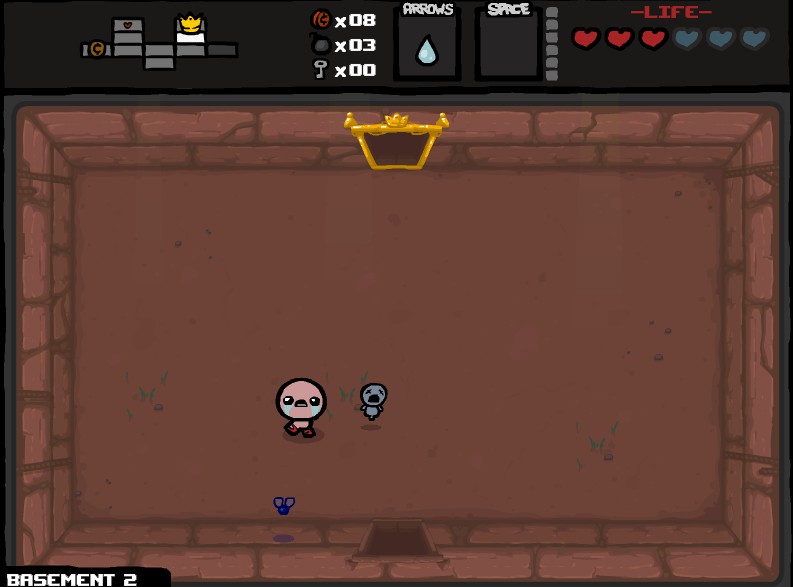There is a lot I could tell you about The Binding of Isaac.
I could tell you about its story, told at the very beginning of the game, a parody of religious tales which is certainly not the type of thing you’d find in your average video game.
I could tell you about the music, at times haunting and at times heroic, which will stay with you long after you’ve closed the game.
I could tell you about the art style, which is macabre and grotesque and not afraid to be so.
I could tell you about your character, a crying little boy who literally lobs his tears at enemies as projectiles and whose terrible life is told to you in the occasional short but effective flashback. He has no reason to live; he is unloved and unimportant, but he runs away from death anyway, for no other reason than, well… dying is scary and bad.
I could tell you about all of that in detail, but instead I’m going to tell you about the gameplay.

This game is a masterpiece of simplicity. You run, you shoot, you explore your dungeons and you beat your bosses. This is all done extremely well, of course, but let me tell you about a few things that the game did to tweak this formula and improve it.
Firstly, in true roguelike fashion, there is permadeath. There are no lives and no continues in this game, unless you, by chance, manage to stumble upon a rare item which gives you a bonus life. But those items are few and far between. When you die in this game, you’re dead and you have to start the game over.
Secondly, the dungeons are randomly generated. No two games are alike. This goes together with the permadeath nicely because if you die, sure you lose your items and powerups, but it’s not like you have to redo a bunch of levels you’ve already done. Instead, you get to play through a whole new experience.
Thirdly, there are hundreds of little items and secrets in this game. Because your dungeons are randomly generated, you never know what items you’re going to find. All of the items do something completely different and interesting, and using them is often a surprise because you usually can’t tell what the item or powerup does just by looking at it. The game does keep track of which items you’ve found through the course of your travels, and finding all of these items (and cards, a whole different subset of items to collect) becomes this whole Pokemon-like minigame that keeps you hooked long after you may have otherwise stopped being interested.
Fourthly, the dungeon-crawling itself is just plain solid. It’s simple enough to be easy to learn and the difficulty is tweaked just enough that you’re always on your toes without feeling too overwhelmed– most of the time, anyway.
In short, this is what a 2-D action video game is supposed to be. I’m a sucker for things like the Humble Bundle or Indie Royale so I’ve played a lot of indie games lately, but this is probably the best of the lot.
You can find a pretty full-featured demo of the game on Newgrounds, and the full game is $5 on Steam. If you let the game grow on you, you won’t be disappointed.
